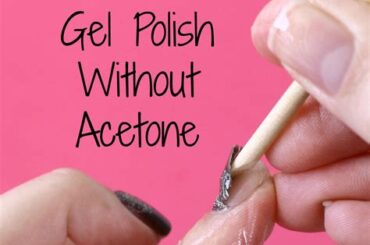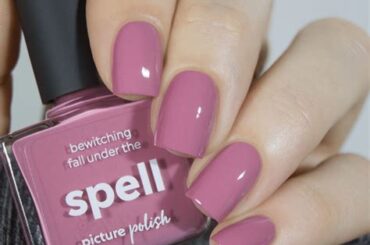Achieve flawless nail polish application with tips on preparation, choosing base coat, application technique, long-lasting results, avoiding mistakes, top coat, quick drying, and nail care. Avoid damaging nails.
Preparation: What to do before applying
Before you begin applying nail polish, it’s important to properly prepare your nails. Start by removing any old polish using an acetone-free remover to avoid drying out your nails. Next, trim and shape your nails to your desired length and style. Be sure to also gently push back your cuticles to create a clean and polished look.
After preparing your nails, it’s crucial to clean them thoroughly to remove any dirt, oil, or residue. Use a nail cleanser or simply wash your hands with soap and water to ensure that your nails are completely clean and ready for polish application.
Lastly, consider using a base coat before applying your nail polish. A base coat not only helps the polish adhere better to your nails, but it also creates a smooth surface for an even application. Additionally, a base coat can help prevent staining and chipping, ensuring a longer-lasting manicure.
Choosing the right base coat
Choosing the right base coat
When it comes to painting your nails, the first step is to choose the right base coat. This is an important part of the process because it creates a smooth surface for the nail polish to adhere to. It also helps to protect your nails from staining and strengthens them, making your manicure last longer.
When choosing a base coat, look for one that is specifically designed for your nail type. If you have weak or brittle nails, opt for a strengthening base coat that contains ingredients like keratin or calcium. If your nails tend to get discolored easily, consider using a base coat with a yellow or pink tint to help neutralize any discoloration.
It’s also important to ensure that the base coat is free from harmful chemicals such as formaldehyde, toluene, and DBP. These chemicals can be damaging to your nails and overall nail health, so it’s best to choose a base coat that is labeled as 3-free or 5-free.
Application technique for a flawless finish
The Dos and Don’ts of Nail Polish Application
When it comes to achieving a flawless finish with your nail polish application, the first step is to ensure that your nails are clean and dry. Use a gentle nail polish remover to rid your nails of any remaining polish or oils, and then wash your hands thoroughly with soap and water. Once your nails are clean and dry, it’s time to apply a base coat.
For a flawless finish, it’s important to apply the base coat evenly and smoothly. Start by applying a thin layer of base coat to each nail, making sure to cover the entire nail surface. Allow the base coat to dry completely before moving on to the next step. This will create a smooth and even base for the colored polish to adhere to.
When applying the colored polish, start with a thin layer and use slow, steady strokes to cover the entire nail surface. Avoid applying too much polish at once, as this can lead to streaks and smudges. Once the first layer is dry, apply a second thin coat to ensure full coverage and a flawless finish. Finish with a top coat to seal in the color and add a glossy shine.
Dos for creating long-lasting nail polish
When it comes to creating long-lasting nail polish, there are a few key dos that can make all the difference in the longevity and durability of your manicure. First and foremost, it’s important to start with clean, dry nails. This means removing any old polish, buffing the nails to create a smooth surface, and making sure they are free of any oils or lotions that could prevent the polish from adhering properly.
Another important do for long-lasting nail polish is to use a base coat. A high-quality base coat not only helps the polish adhere better to the nails, but also provides a smooth, even surface for the polish to go on. This can help prevent chipping and peeling, extending the life of your manicure.
Finally, when applying your nail polish, make sure to cap the free edge of the nail. This means applying polish to the very tip of the nail, which can help prevent chipping and peeling. Additionally, using a top coat can help seal in the polish and add an extra layer of protection, further extending the life of your manicure.
Avoiding common mistakes during application
Nail polish application is an art that requires attention to detail and precision. To achieve a flawless finish, it is important to be aware of the common mistakes that can occur during the application process. By being mindful of these dos and don’ts, you can ensure that your nail polish application is smooth and professional.
Do: Clean your nails thoroughly before applying nail polish. Use a gentle nail polish remover to remove any remaining polish and oils from the nail bed. This will help the polish adhere better and prevent chipping.
Don’t: Apply thick layers of nail polish in an attempt to achieve full coverage in one coat. This can lead to uneven application and longer drying time. Instead, apply thin, even layers and allow each coat to dry before applying the next.
Using top coat for a professional look
When it comes to achieving a professional-looking manicure, using a top coat is essential. A top coat not only provides a glossy finish to your nail polish, but it also helps to protect your manicure from chipping and peeling. Applying a top coat can also extend the wear-time of your nail polish, ensuring that your manicure looks fresh and flawless for longer.
When applying a top coat, it’s important to wait until your colored nail polish is completely dry. Applying a top coat too soon can cause smudging and streaking, ruining the look of your manicure. Once your colored polish is dry, apply a thin, even layer of top coat, starting from the base of the nail and sweeping upward toward the tip. This will ensure that your entire nail is covered and protected.
In addition to providing a glossy finish and protecting your manicure, using a top coat can also help your nail polish dry quicker. Some top coats are formulated to dry quickly, saving you time and helping you achieve a professional-looking manicure in no time at all. Just be sure to look for a fast-drying top coat specifically designed for this purpose.
Tips for quick drying of nail polish
The Dos and Don'ts of Nail Polish Application
When it comes to applying nail polish, waiting for it to dry can be an excruciating process. However, there are some tips and tricks that can help speed up the drying time and have your nails looking perfect in no time.
One tip for quick drying of nail polish is to use a quick-dry top coat. There are many top coats on the market specifically formulated to help nail polish dry faster. Simply apply a thin layer of quick-dry top coat over your colored polish and watch as it sets in record time.
Another technique for speeding up the drying process is to dip your painted nails in a bowl of ice water. The cold temperature helps to solidify the polish and set it quickly. Just be sure to let your nails air dry for a few minutes before submerging them in the ice water to avoid smudging the polish.
Removing nail polish without damaging nails
The Dos and Don’ts of Nail Polish Application
When it comes to removing nail polish, there are a few dos and don’ts to keep in mind. First and foremost, it’s important to use a gentle nail polish remover that is acetone-free. Acetone can be very harsh on the nails and can lead to dryness and brittleness. Look for a remover that is formulated with nourishing ingredients such as aloe vera or vitamin E to help protect and strengthen the nails.
Another do when it comes to removing nail polish is to soak a cotton pad in the remover and then hold it on the nail for a few seconds before gently wiping away the polish. This allows the remover to do its job without the need for excessive rubbing, which can be damaging to the nails.
On the other hand, one don’t when it comes to removing nail polish is to pick or peel off the polish. This can cause the top layer of the nail to peel away, leaving it thin and weak. It’s best to be patient and use a gentle remover to ensure that the polish is removed without causing any damage to the nails.
Nail care between applications
After applying your favorite nail polish, it’s important to give your nails some extra care to maintain their health and the longevity of your manicure. One of the dos of nail care between applications is to keep your nails moisturized. This can be done by regularly applying a nourishing nail oil or hand cream to prevent your nails from becoming dry and brittle.
Another important do is to protect your nails from damage. This means wearing gloves while doing household chores or any activities that could potentially harm your manicure. By taking this precaution, you can prevent chipping and peeling of your nail polish and keep your nails looking flawless for longer.
On the other hand, one of the don’ts of nail care between applications is to pick or peel off your nail polish. Doing so can damage the top layer of your nails and leave them weak and vulnerable to breakage. Instead, use a gentle nail polish remover to safely and effectively remove your old manicure before applying a new coat of nail polish.
Frequently Asked Questions
What are the dos of nail polish application?
The dos of nail polish application include starting with a clean nail surface, applying a base coat, allowing each layer to dry before adding the next, and finishing with a top coat for long-lasting wear.
Should I shake the nail polish bottle before application?
It’s a don’t! Shaking the nail polish bottle can create air bubbles, which leads to a bumpy application. Instead, try gently rolling the bottle between your palms to mix the polish.
How can I prevent chipping of nail polish?
To prevent chipping, make sure to cap the free edge of your nails with each layer of polish. This helps to seal the color and protect it from lifting or chipping.
Is it recommended to apply multiple thin coats or one thick coat of nail polish?
It’s a do to apply multiple thin coats of nail polish rather than one thick coat. Thin coats dry faster and are less likely to smudge or get air bubbles.
What is the best way to remove nail polish without damaging the nails?
The best way to remove nail polish is by using an acetone-free nail polish remover to prevent drying out your nails. Make sure to moisturize your nails after the polish is removed.
Can I apply nail polish on toenails the same way as fingernails?
Yes, you can apply nail polish on toenails similarly as fingernails. However, toenails typically experience more wear and tear, so sealing the edges with topcoat is especially important.
Should I use a quick-dry spray or top coat for faster drying?
Either option works well for faster drying, but using a quick-dry top coat is usually more effective and provides added protection and shine to the nail polish.





